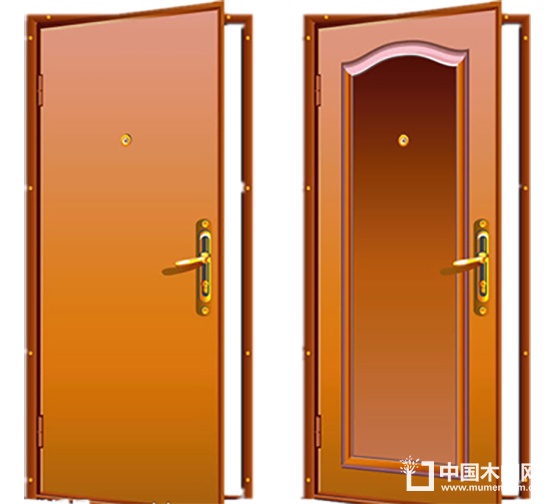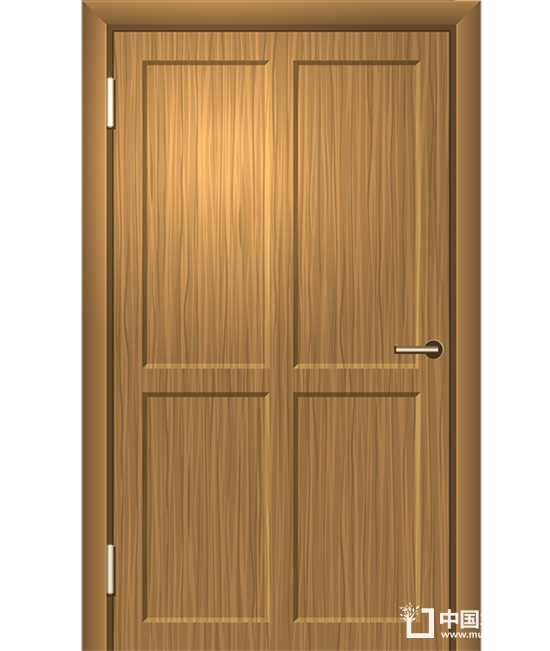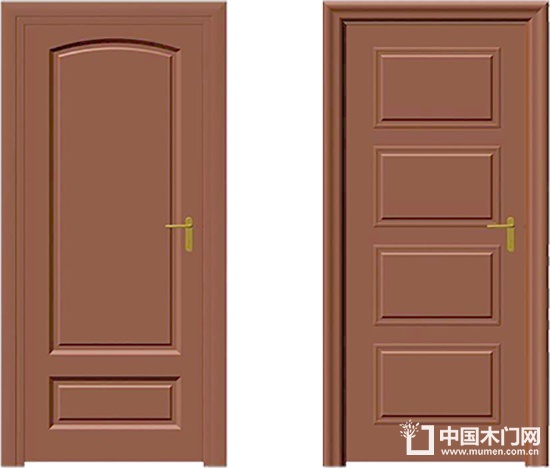In recent years, thin wood has been widely used in the wood door production industry as an excellent surface decoration material. The quality and veneering technology of the veneer also determines the quality and grade of the veneer door products. With the small size of the pressure lines used for the production of wooden doors and the increasing complexity of the line shape, the method of replacing the edging with manual paste wood is increasingly used in the wood door production industry. Based on the summary of practical experience, this paper focuses on the production and processing technology, inspection methods and advantages and disadvantages of hand-made thin wood.

Hand lay-up thin wood production process
1. Substrate milling material
Medium density fiberboard is commonly used in factories as the main processing material, and the thickness is generally 18 mm, 25 mm. Sometimes, due to some special needs, the thickness can also be increased by lamination.
2. Medium density milling
Due to the complexity of the external linearity of the wooden door components, the line can be drawn according to the requirements of the drawing documents, and then the small band saw machine can be used for the preliminary processing according to the line shape drawn in the previous stage. After the hair shape is processed, the double-axis vertical milling machine (or the router) can be used. ), etc. for final processing.
Prenatal preparation before hand paste
1. Hand-paste tools and materials
Milky white glue, water, big roller brush, bucket, iron (ordinary iron iron) and long power cord after remodeling, small roller brush, wet clean rag, scissors, 80 mesh to 120 mesh gauze with several pieces, wallpaper blade .

2. One-time coating of the milled plate
After the plate is milled, it needs to be glued once. The glue is made of water-soluble milky white glue. The prepared milky white glue is mixed into a small amount and a proper amount of water to be evenly mixed, and the viscosity of the original milky white glue is diluted (it is preferable to quickly flow down after being rubbed by a roller brush). Then use a roller brush to evenly roll the plate on the board where you need to paste the wood. The roller brush is pulled back and forth several times to make the glue evenly penetrate into the fiber gap of the loose layer of the medium density fiberboard, and then it is placed on the workbench, waiting for the water to evaporate and dry. This operation step is to prevent the hand paste from being directly applied without applying the glue once, so that the glue directly penetrates into the fiber gap of the medium density fiberboard, and the plate and the thin wood cannot be fully adhered by the glue nails, and the color is colored by humid air or pigment. After that, the plate and the thin wood layered phenomenon.
3. Preparation of thin wood
The thickness of the thin wood used in the factory is generally between 0.25 ram and 0.3 ram, and the thin wood texture can be cut and cut, and can be any material. Immerse the thin wood to be used in a clean bucket. After being soaked, take it out and set it on the side of the table to remove excess water. However, when the hand lay-up is required, the thin wood must be moist. This procedure is such that, in the case of hand lay-up, the moist veneer is easily bonded to the glue, flatly adheres to the panel, and is not easily cracked from the texture during operation as dry thin wood.

4. Hand paste method
Firstly, the dried plate which has been once coated is sanded with an abrasive tape to remove the rubber particles which are generated after drying by one application and the fiber bundles which are generated by the expansion of the fibers after water absorption. Under normal circumstances, sanding back and forth 3 to 4 times can meet the requirements. Then use a small roller brush to roll evenly on the plate of the desired paste wood, while observing and removing impurities in time. Apply the damp wood to the plate, use a damp rag to press from the line to the lower part, and then press it on the thin piece of wood with a heated iron (temperature between 80 ° C and lo 0 ° C). Drag and drop as long as the ironing, use the eye to observe which wood is dry and layered with the piece during the dragging process. Press the wet rag here for a few seconds to make the glue between the veneer and the plate work again. The iron is re-bonded. If you encounter a corner, you must press it from the convex part of the line to the recess, and press the tip of the iron at the corner. Especially when the part is small and the line type is small, be careful and avoid the board. Layered with thin wood, you can also make the corresponding tooling for ironing. Be sure to pay attention to the temperature of the iron and the time of ironing the wood to prevent the high temperature from charring the wood, resulting in the loss of the natural texture and color of the wood.
Document.body.oncopy = function () { setTimeout( function () { var text = clipboardData.getData("text"); if (text) { text = text + " This article comes from China Wooden Door Network, China's well-known wooden door industry portal Website! (http://) Detailed reference: "+location.href; clipboardData.setData("text", text); } }, 100) }Beard Trimmer,Barber Tools Men,Haircut Tools Women,Barber Tools Rechargeable
ZHEJIANG SHENGFA ELECTRIC APPLIAMNCES CO.,LTD , https://www.shengfa-appliance.com